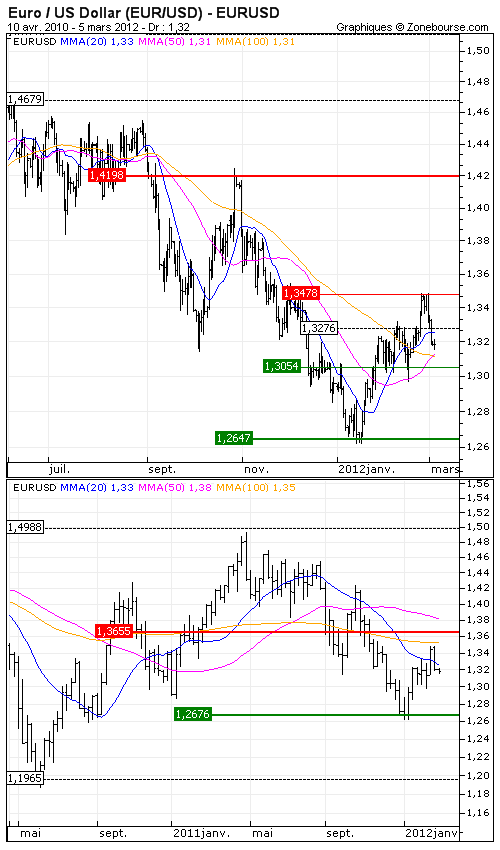Euro / US Dollar (EUR/USD) : Loss of visibility
By Rodolphe Steffan
The new injection of the European Central Bank was the event last week which encouraged investors. However, the figure was in line with expectations with 529.53 billion borrowed by 800 banks in Europe and did not trigger a special euphoria. Instead, as only 523 banks had used the previous operation of this nature end of 2011, the success of this second refinancing highlights the risk of insolvency that continues to threaten the Old Continent. Markets were also aware that this infusion of cash will not erase the structural problems of the region : unemployment and slow growth.
In parallel, the Federal Reserve chief Ben Bernanke welcomed the recent improvement in labor market. Decidedly positive tone of his remarks has suggested that a third quantitative easing (QEIII) may not be necessary. This optimism has therefore supported the dollar.
In Eurozone, Greece downgrading by the three major rating agencies, the decline in retail sales in Germany and the upward revision by the Spanish government of the deficit this year, were not likely to reverse the trend.
Technically, 1.35 USD was therefore not crossed contrary to the intermediate support at 1.3276 USD. Our bearish views are decreasing on the pair while a further decline to 1.3054 USD seems relatively possible.










